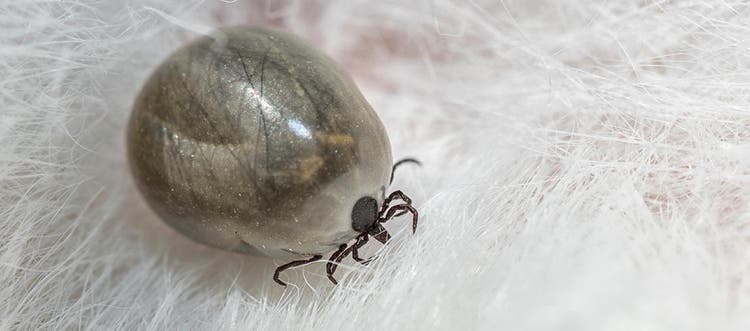Removing a tick isn’t always easy to do. So, you’ve followed our step-by-step guide to removing a tick, but your dog or cat has been left with the tick head stuck in them?
How dangerous to my cat or dog’s health is a tick part that’s left behind?
If you attempt to remove a tick but its head or mouthparts are left behind in your pet, don’t panic. You’ve killed the tick and removed its body, preventing any serious risk of disease transmission. The residual parts, however, could still lead to an infection at the attachment site.
Find out what you need to do to tackle the remaining issue.
What to do if a tick head is stuck in your pet
It’s not always easy to remove a tick, nor is it always clear if you managed to remove its entire body. To be on the safe side, you may need to take action to prevent infection.
Disinfect the area
If a part of the tick is left behind in your pet, it’s important to disinfect the area. You can clean the area with soap and water or disinfect the area with alcohol (or a suitable disinfectant) and monitoring the area on your pet’s skin. If the whole tick is still attached, however, it is very important not to treat the area with alcohol or disinfectant, as this can increase the risk of disease transmission. Ultimately, the safest course of action is to book an appointment to have your veterinarian check the area. Your veterinarian will be able to advise you on the best course of action, depending on whether the tick remnants are causing harm to your pet.
Visit your veterinarian
In cases where the affected area has become red, swollen or painful or has a draining sore, it’s important to book an appointment with the veterinarian right away. If the affected area has become infected your veterinarian may prescribe a topical antibiotic or a course of oral antibiotics to treat it.
What NOT to do if a tick head is stuck in your pet
Beware of misinformation! There are various home methods of removing ticks which are not effective and are not recommended.
Don’t attempt to extract it yourself
Put down those tweezers now! Do not use tweezers to dig at the tick head. You could injure your pet or increase the risk of a skin infection.
Don’t use petroleum jelly or nail varnish remover
It is a myth that applying petroleum jelly or nail polish remover on the tick will help remove ticks or tick parts. Neither of them will work. They will just further irritate your pet’s skin.
Never burn a tick off
Do not put any form of fire or matches near your pet! Heat will not remove a tick or mouthparts embedded in your pet’s skin. It will only result in you burning and possibly seriously injuring your pet.
Signs a tick has infected your pet
In some cases, the remaining bits of the tick may be so miniscule you don’t realize you haven’t removed the entire tick and often these small remnants do not cause your pet any concerns After the tick has been removed keep an eye out for swelling, redness or irritation in the attachment area. If you spot any signs of infection bring your pet to see your veterinarian right away.
Although uncommon, your pet may develop signs of a more serious tick-borne infection, such as Lyme disease. You should take your dog to the veterinarian if they are displaying any of the following symptoms that could indicate Lyme disease:
- lost appetite
- lethargy
- stiff or sore joints
Prevent ticks biting to protect your pet’s health – and your own
Tick bites are uncomfortable and potentially dangerous for your pet – and your family - since they may carry serious diseases, including Lyme disease. Prevention is the best cure! Speak to your veterinarian about the best ways to prevent tick bites.









